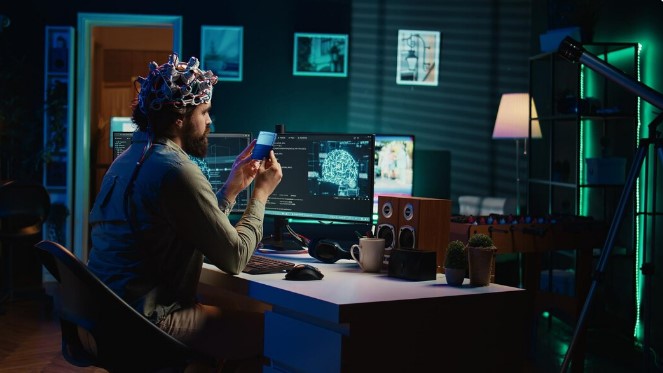Ever found yourself wondering how some apps or videos have voices that sound eerily realistic, even though you know they weren’t recorded by an actual person? That’s not magic — it’s a voice synthesizer, and it’s becoming a bigger part of our everyday digital lives than most people realize.
At first, the idea might sound a little futuristic. A computer that talks like a human? But in reality, it’s already all around us — in navigation systems, audiobooks, online courses, and even in some YouTube channels. And it’s only getting better.
Beyond the Robot Voice
Remember how digital voices used to sound years ago? All robotic and flat, like someone reading a script without any emotion. That’s changed a lot. Today, with a good voice synthesizer, the difference between a human voice and a synthetic one can be hard to spot — especially when it’s trained to sound natural, with real human rhythm and tone.
That’s because synthesizers today don’t just copy words. They learn how people talk. They pick up on little pauses, stresses, intonations — all the things that make speech sound alive. This lets them create voices that feel warm, believable, and sometimes even expressive.
Helping People Find Their Voice
There’s also a really important human side to all this. For people who can’t speak due to illness, injury, or disability, voice synthesis can be life-changing. Imagine being able to communicate again using a voice that’s close to your original sound — not a generic robot, but something that still feels like you.
Some people even use recordings from earlier in life to build their synthetic voice, so it sounds more personal. It’s a quiet, powerful use of technology — not flashy, but deeply meaningful.
And it’s not only for speech recovery. For content creators or educators who need to produce lots of spoken material, a voice synthesizer can help save time and effort without sacrificing clarity or quality.
Voices in Different Languages and Styles
One of the coolest things is how flexible this technology is. A single voice can be made to speak different languages, switch emotions, or adjust tone depending on the context. That means you can use the same synthetic voice to explain science to kids, guide users through a serious safety tutorial, or narrate a fairytale — just by adjusting the style.
And for companies that work globally, this can be a real bonus. A consistent voice can be “translated” into multiple languages while keeping the same tone and personality. That kind of continuity helps with branding, trust, and clarity.
The Future Sounds Familiar
So where’s this all going? Most likely, we’ll keep hearing more synthetic voices — in ways we don’t even notice. And that’s actually a sign of progress. When a voice synthesizer blends so well that you forget it’s not a real person, it means the technology is doing exactly what it’s supposed to: communicating clearly, naturally, and smoothly.
It’s not here to replace people — just to help when human recording isn’t possible, practical, or fast enough. In the right hands, it’s simply another tool to help us connect.
And honestly, that’s the whole point. Whether it’s helping someone speak again or turning text into audio in seconds, the best tech feels less like a machine, and more like a helping hand.

